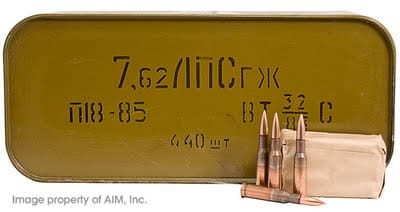

This means that if you buy a new box of ammo, think twice about shooting that ammo right now.


Perhaps the number one piece of advice to follow for ammo shortage is to rotate it out. Want to save this post for later? Click Here to Pin It on Pinterest! Rotate Your Ammo Out Regularly With that in mind, here are some tips you can follow to ensure that your ammunition lasts for decades: The good news is that properly stored ammunition in the right conditions can last for decades while still retaining safety and performance. This is why it’s not just enough to stockpile ammunition. If there were to ever be a major disaster in the United States, such as an EMP attack or cataclysmic natural disaster or total economic collapse, there would almost certainly be a major ammunition shortage as well.Īnd even if a shortage never happens, failing to store the ammunition properly will result in it degrading or corroding, which will greatly impact performance and perhaps even result in it becoming unsafe to shoot at all. And one day, there could be a major disaster that severely reduces ammunition production for a long time.įor example, when new Federal gun control laws were thought to be a near-certain thing in late 2012 and early 2013, there was a massive shortage of ammunition in general, and the prices skyrocketed. Proper ammunition storage should become an even greater concern for you when considering that ammo shortages happen fairly regularly. If you want to protect your investment, you’ll want to extend your ammunition’s shelf life for as long as possible. Here’s another simple fact: Ammo is not cheap and adds up quickly, especially when you purchase ammunition in bulk. The garages should be avoided too, as they not only have safety issues but also the uninsulated ones can be very hot, which is bad for ammo.Let’s start out with a simple fact: Contrary to what you may have heard, ammunition does have a shelf life and will go bad eventually. Putting ammunition in the trunk of a car in hot summer months must be avoided at all costs. Therefore, it is advisable to keep it in cool and dark conditions with minimum exposure to sun rays. High heat accelerates the chemical breakdown and degrades the ammo. Storing at a Cool and Dark PlaceĪ temperature near 70% with a humidity of 50% is an ideal situation for keeping the ammo. Using silica gel packets inside the sealed bags can be instrumental in removing the residue moisture. In an area with high humidity, one can opt for a humidifier, which not only improves the life of ammo but also has other household benefits. Putting the ammo in sealable food containers is another good option.Ī damp basement must be avoided for storing the ammo. The best way to do so is to put the ammo in its original box and use the vacuum seal. The first and foremost step for a long life of ammo is to keep it in water-tight boxes to ensure that moisture stays out.
Shelf life ammo how to#
How to assess degradation: a violet or scarlet-colored gas from the canister is an indication that they have come in contact with the outer surroundings, and the primer has degraded substantially. It is simply because the former comes in contact with oxygen frequently.
Shelf life ammo full#
And a bullet having exposed lead is more prone to lead degradation than those with full metal jackets or those that are brass-lined. Today, however, modern ammo uses smokeless powder, which has a considerably longer life span.įurther, ammo having a steel case is more vulnerable to corrosion in comparison to one with a brass case. If the ammo is rich in these nitro components, there are high chances of its shelf life being considerably less.Įarlier, black powder – which has a relatively shorter life span – was used as propellant. But, it generally includes nitroglycerine and nitrocellulose, which are potential reasons for its degradation. The chemical composition of powder may vary from manufacturer to manufacturer. The primary thing that determines the life of the ammo is its material, especially what the primer, the powder, and the case are made up of. Frequently rotating the ammo in a concealed carry gun.

Tagging using the first stored ammo first.Use of black powder while manufacturing.The key factors behind the degradation of ammo are – After getting manufactured, it mainly depends on factors like place of storage, temperature, moisture, and exposure to air. Initially, the life of ammo depends on the manufacturing technique and the quality of primary components. The ammo does not go “bad” per se, but the powder and the primer lose their potency over time. Therefore, a common question that revolves around the minds of gun owners is – “How long does ammo last?” or “Does ammo go bad?” People often store them for emergencies, so they may not be in use for long.


 0 kommentar(er)
0 kommentar(er)
